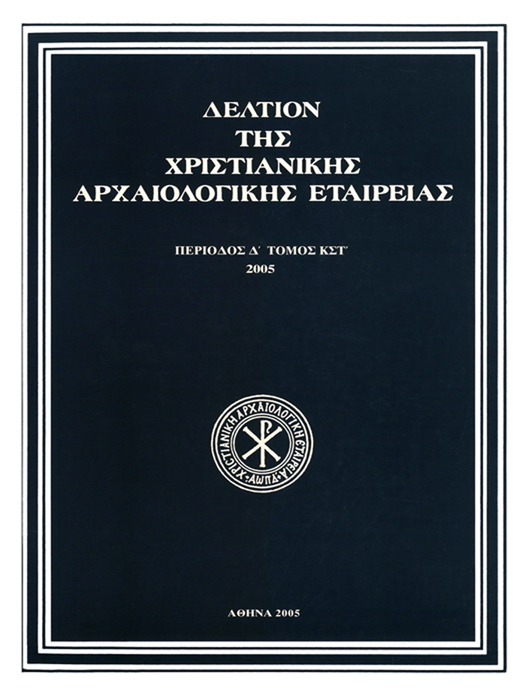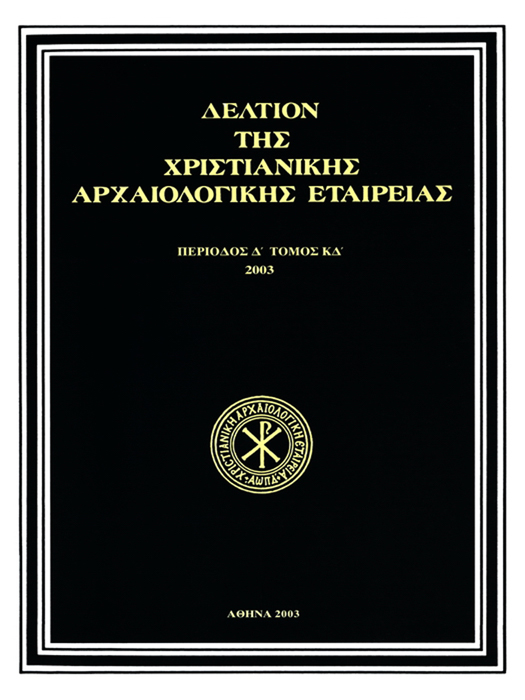Observations on the form of the diakonikon in the Middle and Late Bbyzantine period

Abstract
This article examines certain peculiarities, imposed by liturgical needs, observed in the form of the diakonikon in churches of the Middle and Late Byzantine periods. In some cases these are minor variations which do not seriously affect the balance of the synthesis, while others they constitute major differentiations in the form of the parabemata, characteristic of the east part of churches. In some examples the diakonikon was not included in the design of the church. In a considerable number of Byzantine churches the space corresponding to the diakonikon communicated either only with the holy bema, in which case it served as a closed sacristy, or only with the naos, in which case it functioned as a parekklesion or was for proskynesis, since a cult icon for veneration was placed there.
Article Details
- How to Cite
-
ΚΑΡΑΓΙΑΝΝΗ Φ., & ΜΑΜΑΛΟΥΚΟΣ Σ. (2011). Observations on the form of the diakonikon in the Middle and Late Bbyzantine period. Deltion of the Christian Archaeological Society, 30, 95–102. https://doi.org/10.12681/dchae.639
- Section
- Articles
The copyright for articles in the journal Deltion of the Christian Archaeological Society (henceforth Deltion) is retained by the author(s), with first publication rights granted to the journal and to EIE/ EKT the right to store and communicate these articles to the public via its information infrastructures. By virtue of their appearance in this journal, articles are free to use with proper attribution for non-commercial uses under a ShareAlike obligation. The Christian Archaeological Society and EIE/EKT retain the worldwide right to reproduce, display, distribute, and use articles published in the Deltion in all formats and media, either separately or as part of collective works for the full term of copyright. This includes but is not limited to the right to publish articles in an issue of the Journal, copy and distribute individual reprints of the articles, authorize reproduction of articles in their entirety in another publication of the Christian Archaeological Society, and authorize reproduction and distribution of articles or abstracts thereof by means of computerized retrieval systems.











